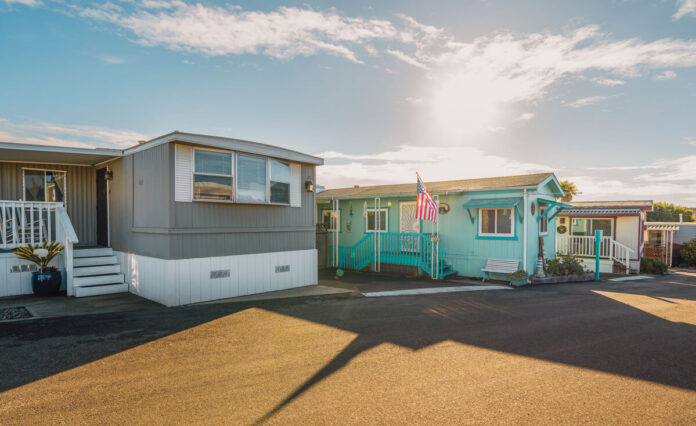Researchers from Louisiana State University and the LSU AgCenter in Baton Rouge are exploring strategies to make resilient homes more affordable for Louisiana residents in a project funded by the U.S. Department of Housing and Urban Development.
The effort — using the previously established FORTIFIED® building standard — is led by a cross-campus, collaborative team of professors from industrial engineering, biological and agricultural engineering, and oceanography and coastal sciences. The goal is to collaborate with industry professionals to identify pathways and limitations to incorporating the standard and elevation criteria into the manufactured housing market.
“These homes help meet the need for affordable and resilient housing in underserved communities across Louisiana,” LaHouse Research and Education Center Assistant Director of Research Bin Mostafiz said. “This project will help low-resource and underserved communities with sustainability, housing, and emergency recovery.”
The Louisiana State Hazard Mitigation Plan found that natural hazards will cost the state $50 billion by 2050, with wind and flood hazards making up the majority of this cost. As severe weather raises home insurance costs and disrupts local economies, the need for cost-effective and resilient strategies in Louisiana is pressing.
One of the biggest barriers to homeowners incorporating more resilient features is the initial cost, but manufactured homes can reduce these costs without sacrificing safety.
FORTIFIED, a voluntary, code-plus building standard developed by the Insurance Institute for Business and Home Safety, has been rigorously tested and is shown to reduce damage from high speed winds, as well as wind-driven rain and hail. Additionally, opting to build to the FORTIFIED standard can reduce a homeowner’s wind insurance premium by more than 50 percent.
Elements of the FORTIFIED Roof
Stronger Edges
Roof damage often begins when wind gets underneath the roof edge and rips it away from the home. To help protect this vulnerable area, FORTIFIED requires specific materials and installation methods “including a wider drip edge and a fully adhered starter strip, that when used together create a stronger system.”
Sealed Roof Deck
If wind rips off a roof covering, whether it’s shingles, metal panels, or tiles, the home is exposed to wind and water. FORTIFIED requires roof decks to be sealed to prevent this type of damage.
Better Attachment
Rather than common smooth nails, FORTIFIED requires ring-shank nails, installed in an enhanced pattern, to help keep a roof deck attached to the home in high winds. The use of ring-shank nails “nearly doubles the strength of your roof against the forces of winds.”
Impact-Resistant Shingles
The FORTIFIED standard provides a Hail Supplement for homeowners in hail-prone areas. Shingles must score Good or Excellent on the IBHS Hail Impact Ratings, which outperform standard Class 4 shingles when tested against realistic hailstones and will better protect a home from hail up to two inches in diameter.
The Silver standard adopts the roofing standard and adds structural integrity qualities to damage prone areas of a home, including chimneys, gables, other attached structures, and garage doors. The Gold standard provides the previously mentioned standards and requires an engineered continuous load path that is specific to an individual home. The load path ensures the roof is properly affixed to walls, and that weight on the walls is spread across the structure, with walls properly affixed to the foundation.
Research conducted at the LSU AgCenter LaHouse Research and Education Center has shown that implementing strategies from the FORTIFIED roof requirements reduced wind loss by up to 38 percent. FORTIFIED Silver standard elements decreased wind loss by up to 73 percent, and the FORTIFIED Gold standard reduced loss due to high wind by up to 80 percent.
This research will also look at reducing flood hazards for homeowners. Freeboard, additional elevation above the base flood elevation has been proven to reduce flood risk. Previous research from the LSU AgCenter found that raising a home two feet above the 100-year flood elevation level can reduce flood risk by 99 percent.
The overall goal of this project is to increase resilience of communities while maintaining lower costs for homeowners. In order to achieve this goal, the researchers have four main priorities. First, they will conduct research on trends and benefits of FORTIFIED and elevated homes in the manufactured housing market. Additionally, they will examine barriers and areas for improvement in the manufactured home supply chain as well as differences in life cycle costs between off-site versus on-site FORTIFIED and elevated manufactured homes. Lastly, the researchers will establish protocols to measure operational and cost efficiency.
“The project’s findings and tools can serve as a valuable resource for HUD researchers, policymakers and government officials, and industry partners, including construction professionals, guiding them toward the adoption of resilient construction practices,” LSU Industrial Engineering professor and project leader Isabelina Nahmens said.
MHInsider is the leader in manufactured housing news and is a product of MHVillage, the top place to buy, sell, or rent a mobile or manufactured home.










